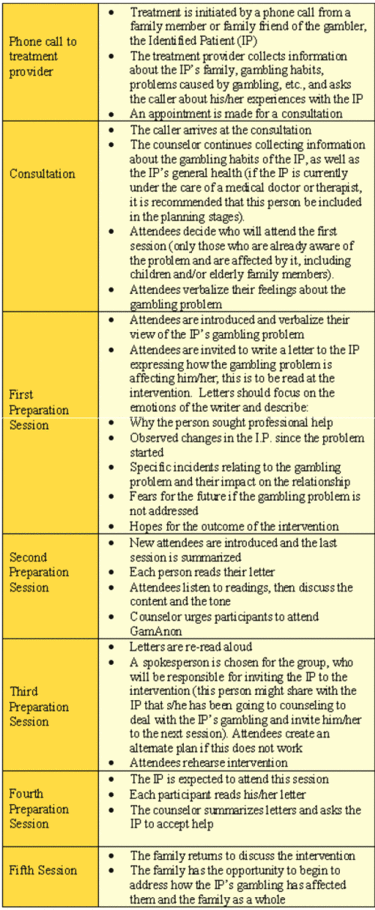The WAGER Vol. 9(51) – Gambling Problems, Relationships and Social Networks. Part 3 – Family Interventions for Problem Gambling
Gambling Problems, Relationships and Social Networks.
Part 3 – Family Interventions for Problem Gambling
Series organized by Michael Stanton
Because of its far-reaching impact, some refer to pathological gambling as a “family disease” (Heineman, 1994, p. 67) and suggest that it is as important to help the family of the gambler as it is to help the gambler (Heineman, 1994). Pathological gambling has the potential to cause serious financial difficulties for gamblers and their families; financial problems, lying, and deceit can place considerable strain on familial relationships. This circumstance can cause great stress for the person sharing responsibility for household finances with the gambler. In some cases spouses have taken out personal loans, or cosigned a second mortgage, to try to repay debts (Heineman, 1987). Lying and distrust often lead to a loss of emotional and physical intimacy in the relationship (Steinberg, 1993). Similarly, children might be deprived physically and emotionally, which could stimulate feelings of loneliness and isolation (Abbott, Cramer, & Sherrets, 1995). Any of these problems could have serious long-term consequences: one study by Heineman (1987) found that 54% of the wives of alcoholics in the study, and 69% of the wives of pathological gamblers in the study, grew up in a family where alcohol dependence and/or pathological gambling was present.
This week’s WAGER describes one possible way family and/or loved ones can help disordered gamblers and themselves recover from the consequences of gambling problems. According to Heineman (1994), family interventions can address these troubles and try to prevent further harm. The structure of the intervention designed by Heineman is described in Table 1.
Table 1: Description of individual sessions in Structured Family Intervention (adapted from Heineman, 1994)
Heineman recommends that these interventions be guided by a professional counselor, as this would ensure the intervention is carried through in a non-confrontational, supportive, setting. Further she recommends that once the intervention itself has taken place, whether it results in the gambler entering treatment or not, the family members involved follow up by attending GamAnon meetings, perhaps supplemented by personal, couples, or family treatment sessions to more thoroughly address the emotional issues stemming from the disorder.
This recommendation for family intervention is not based on clinical trials and the aforementioned procedure is not evidence-based. Therefore, there is some likelihood that this approach might include considerable unstudied risks (e.g., secret meeting of family and friends might be perceived by the IP as threatening, resulting in the disruption or loss of a support network); it is also possible to encourage the IP into treatment with family members and/or a professional treatment provider through less coercive and secretive means. In the long-term, this strategy might be more effective with fewer risks. As stated in a previous WAGER (6(50)), it is important to utilize treatments that have been demonstrated effective, with limited risks, by carefully conducted scientific trials. This strategy will maximize the benefits to the patient and minimize potentially harmful effects. The Hieneman approach serves as one traditional option among many for families struggling with the effects of pathological gambling to begin addressing their concerns. More clinical trials are needed to determine whether this method helps the gambler and others involved in the intervention, has no effect, or the extent to which it causes harm, if any. Though pathological gambling is a disorder that can have a devastating influence on gamblers and their families, there are resources available and treatment approaches, like the one mentioned above, to help those suffering. It is important to remember that even if an excessive gambler refuses help and refuses to address the problem, it is still possible for others affected to heal and move past this heartbreaking experience.
Comments on this article can be addressed to Siri Odegaard.
References
Abbott, D. A., Cramer, S. L., & Sherrets, S. D. (1995). Pathological gambling and the family: Practice implications. The Journal of Contemporary Human Services, 76(4), 213-219.
Heineman, M. (1987). A comparison: The treatment of wives of alcoholics with the treatment of wives as pathological gamblers. Journal of Gambling Studies, 3(1), 27-40.
Heineman, M. (1994). Compulsive gambling: Structured family intervention. Journal of Gambling Studies, 10(1), 6776.
Steinberg, M. A. (1993). Couples treatment issues for recovering male compulsive gamblers and their partners. Journal of Gambling Studies, 9(2), 153-167.
